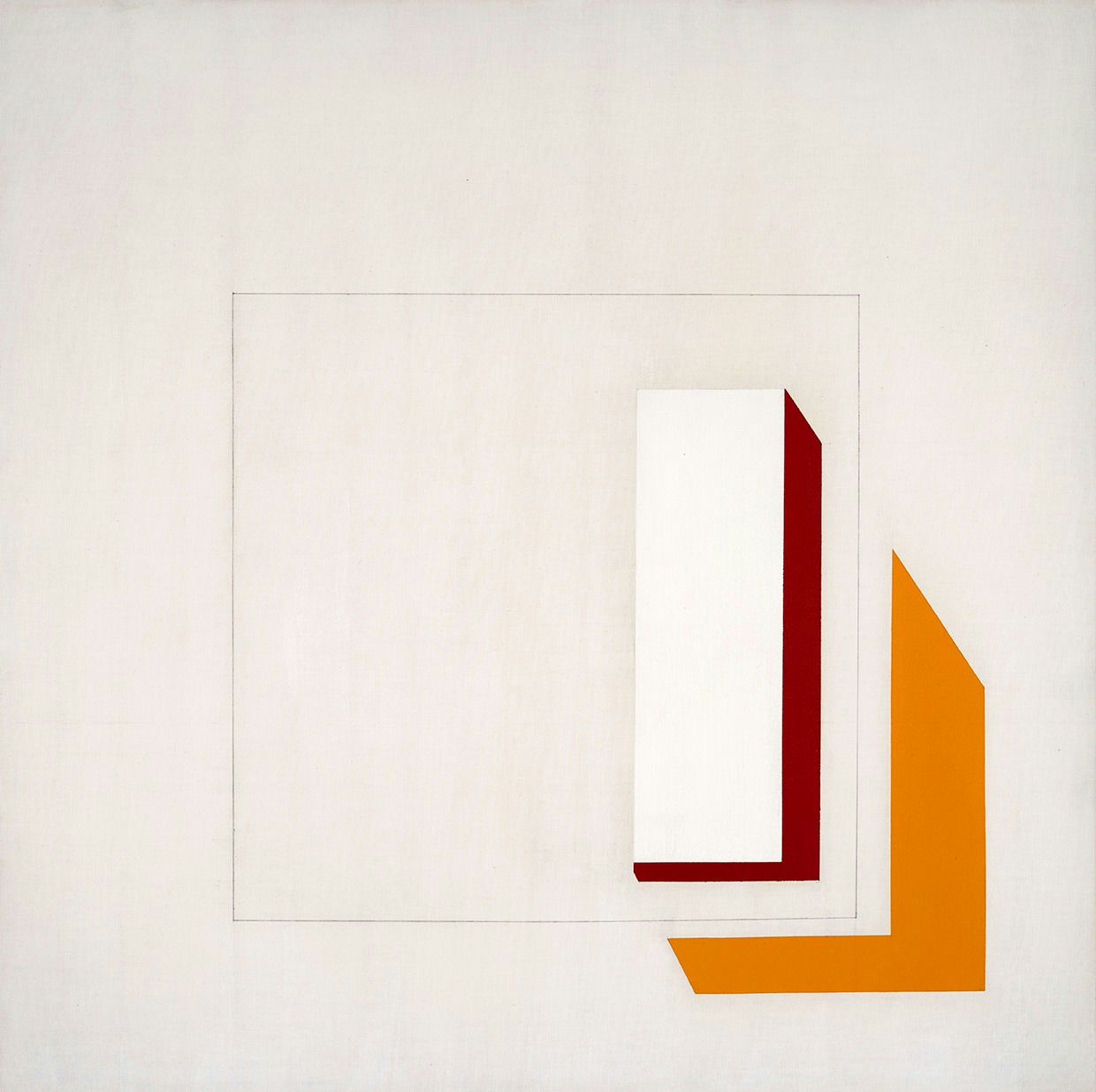
Ana Mercedes Hoyos, Proyecto para ventana, 1976, acrylic on canvas, 120 x 120 cm (48 x 48 in).
Courtesy of the estate of Ana Mercedes Hoyos.
Ana Mercedes Hoyos
exclusive representation in
Europe, Switzerland and the UK
Ana Mosseri
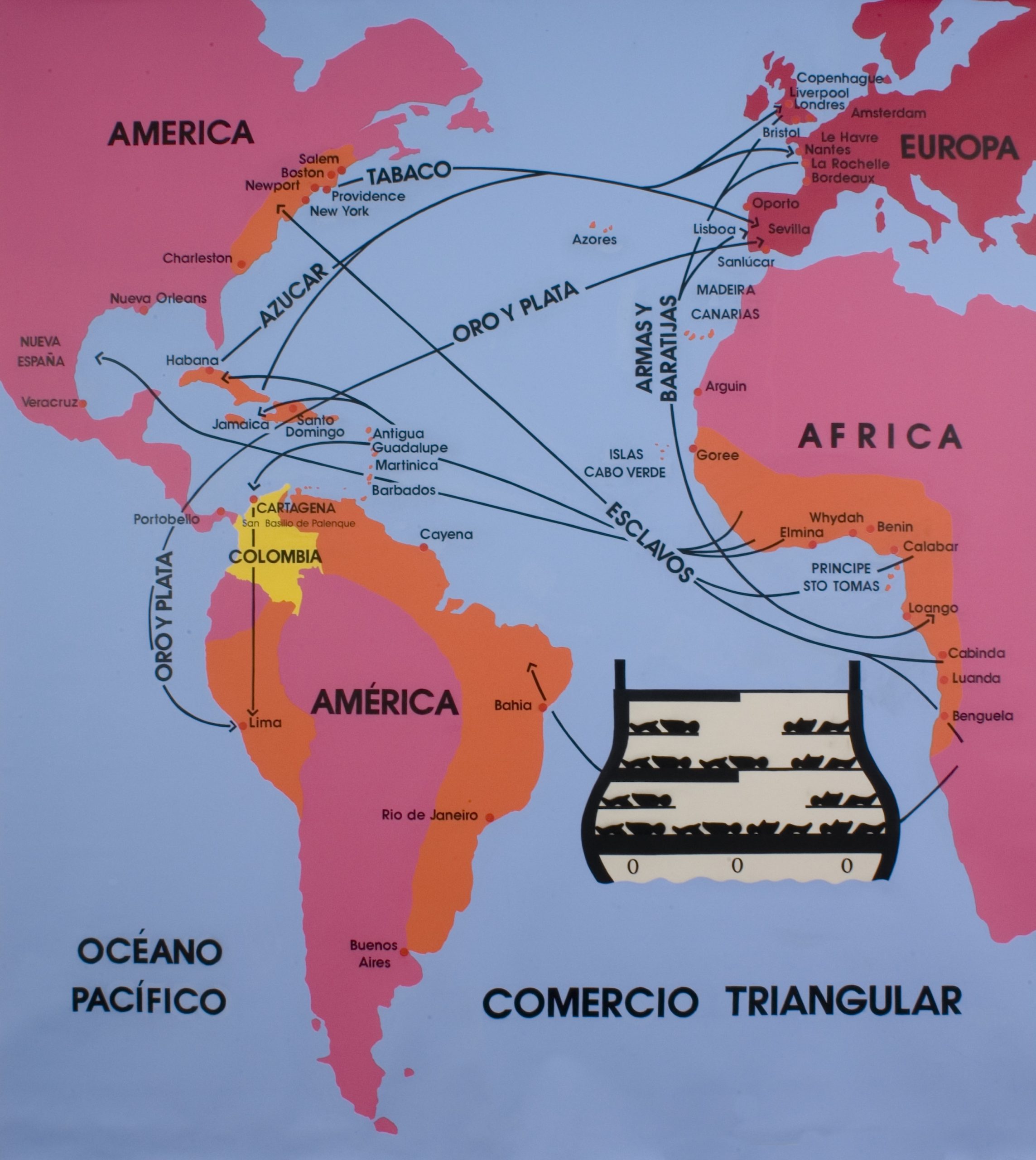
Image on top: Ana Mercedes Hoyos, Comercio triangular, 2007, acrylic on canvas, 326 x 326cm. Courtesy of the estate of Ana Mercedes Hoyos.
rossogranada is pleased to announce the representation of the Ana Mercedes Hoyos Estate in Switzerland, Europe, and the United Kingdom.
Ana Mercedes Hoyos (1942–2014) is one of Colombia’s most prominent and internationally recognized female artists of the twentieth century. Based between Bogotá and New York, she developed a cross-continental practice that positioned her at the center of Latin American modern and contemporary art. Her early work was shaped by American modernism and the dynamic New York art scene of the 1970s, where she absorbed elements of pop, conceptualism, and abstraction. The Ventanas series marked a turning point, reflecting her ability to move fluidly between abstraction and figuration—an approach that would define her career.
Over time, her work shifted toward cultural memory and historical reflection, particularly through her long-standing relationship with the Afro-Colombian community of San Basilio de Palenque. Through still lifes, portraits, and large-scale compositions, Hoyos brought visibility to subjects often excluded from dominant art histories, while maintaining a rigorous commitment to formal exploration. Her work bridges visual experimentation and cultural storytelling, solidifying her legacy as a key figure in the redefinition of Latin American art.
In partnership with the Estate, rossogranada will lead the preservation, promotion, and international dissemination of Hoyos’s legacy across Europe. Through curated exhibitions, educational initiatives, and institutional collaborations, the gallery will support a new chapter for Hoyos’s work—one that expands its visibility while honoring the depth and relevance of her artistic vision.
WORKS
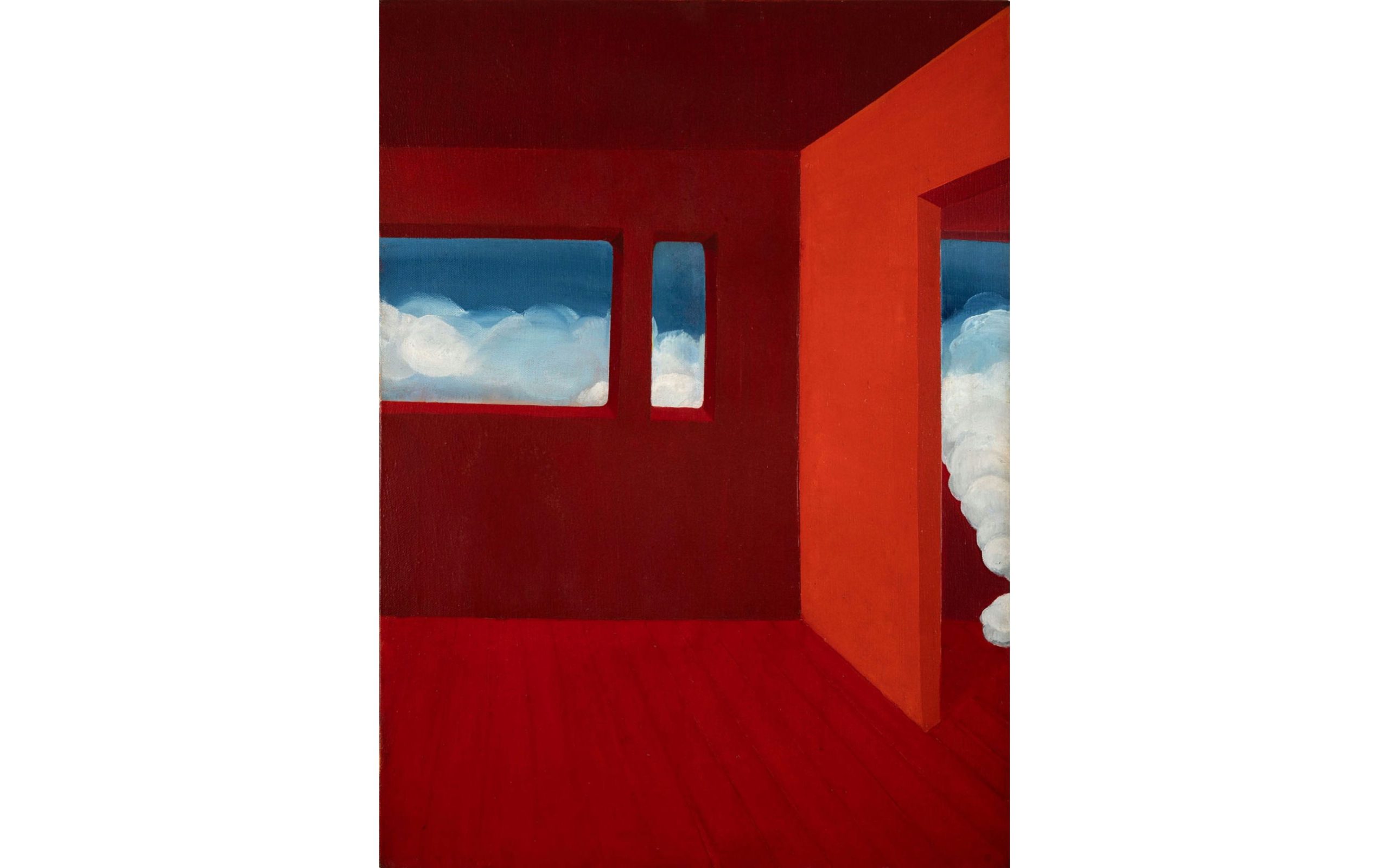
Ana Mercedes Hoyos
Sin título, 2009
Oil on canvas
40 x 40 cm (16 x 16 in)
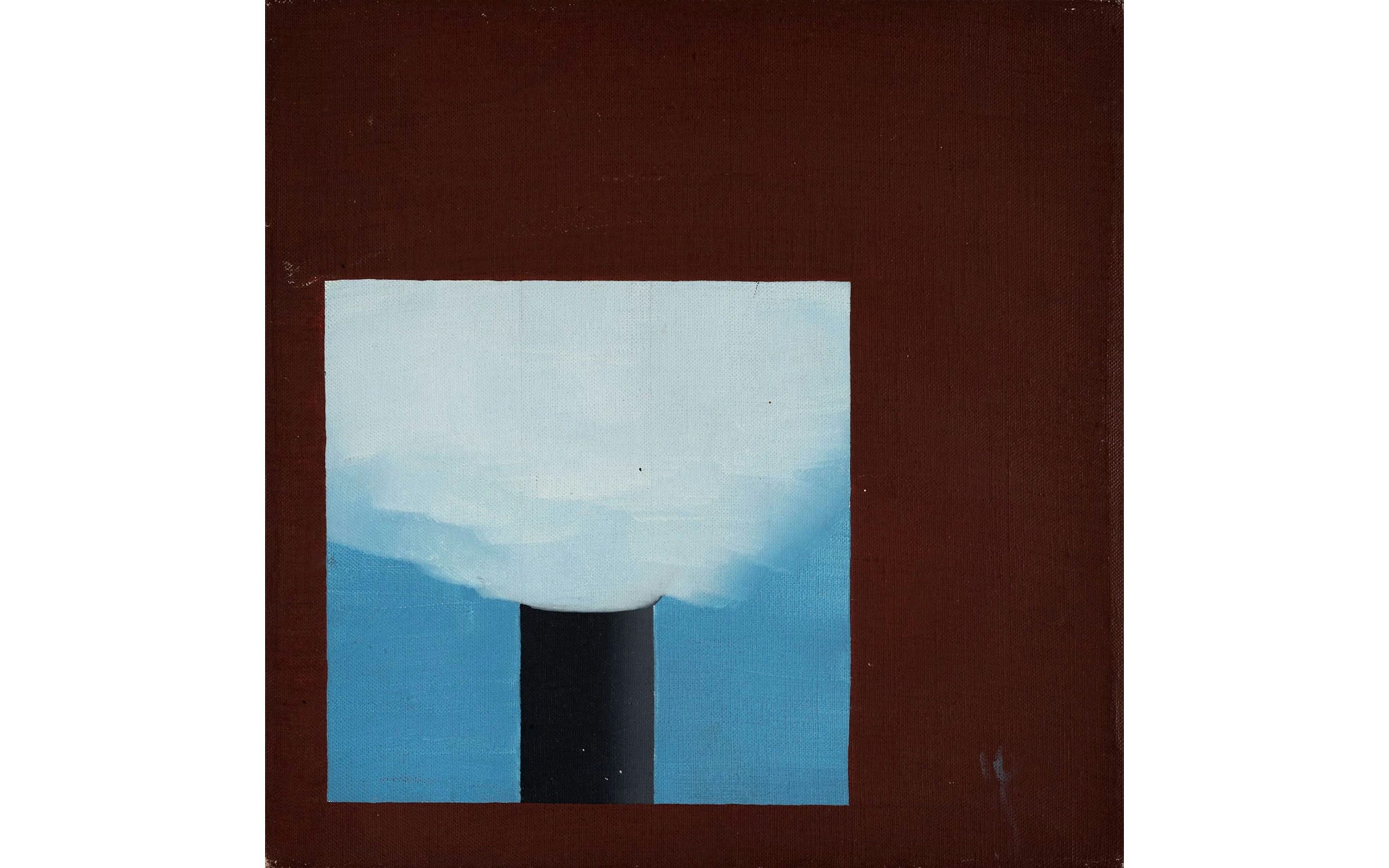
Ana Mercedes Hoyos
Ventanas, 1969
Oil on canvas
20 x 20 cm (8 x 8 in)

Ana Mercedes Hoyos
Sin título, 2009
Oil on canvas
40 x 40 cm (16 x 16 in)
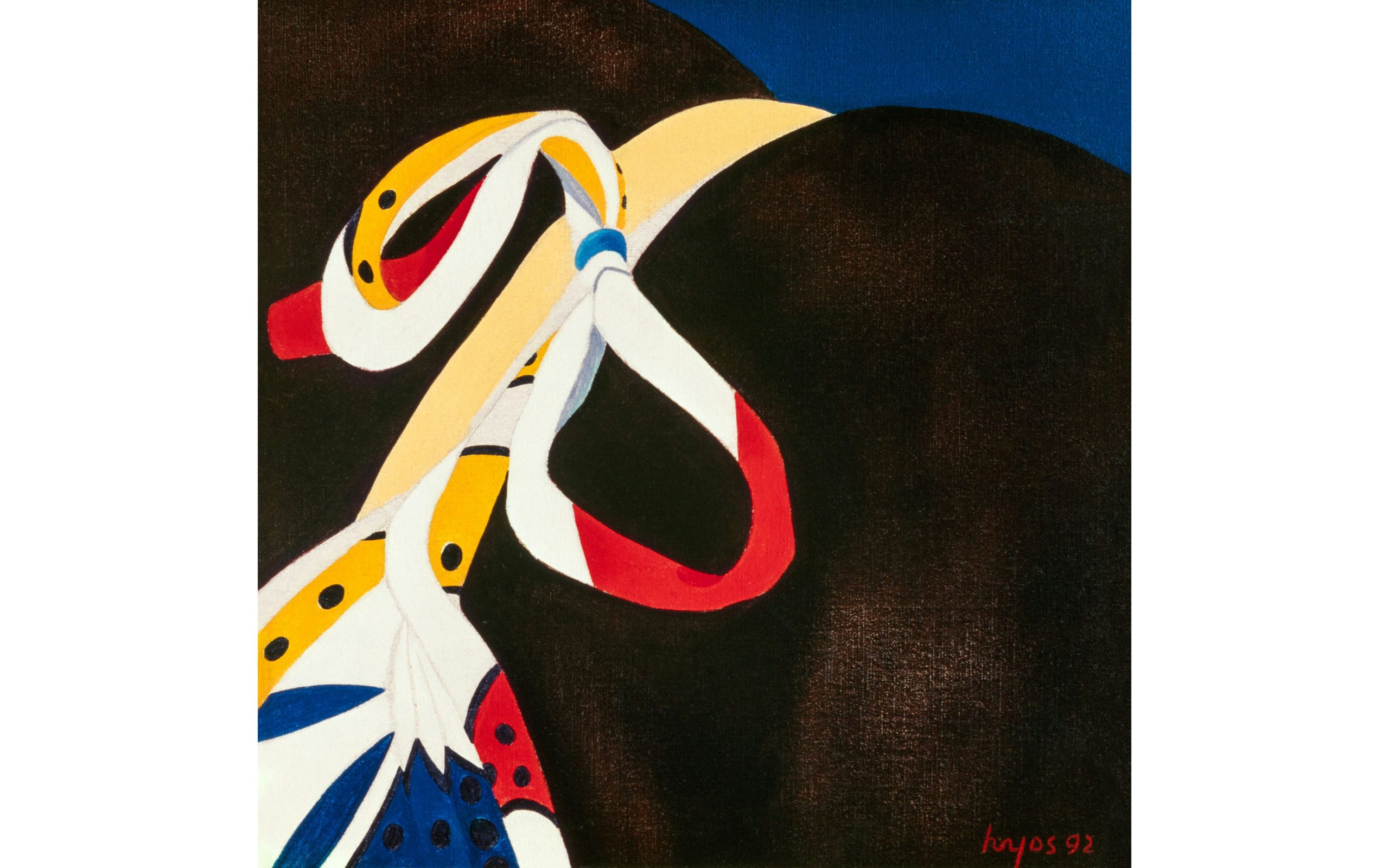
Ana Mercedes Hoyos
Sin título, 1992
Oil on canvas
35 x 35 cm (14 x 14 in)
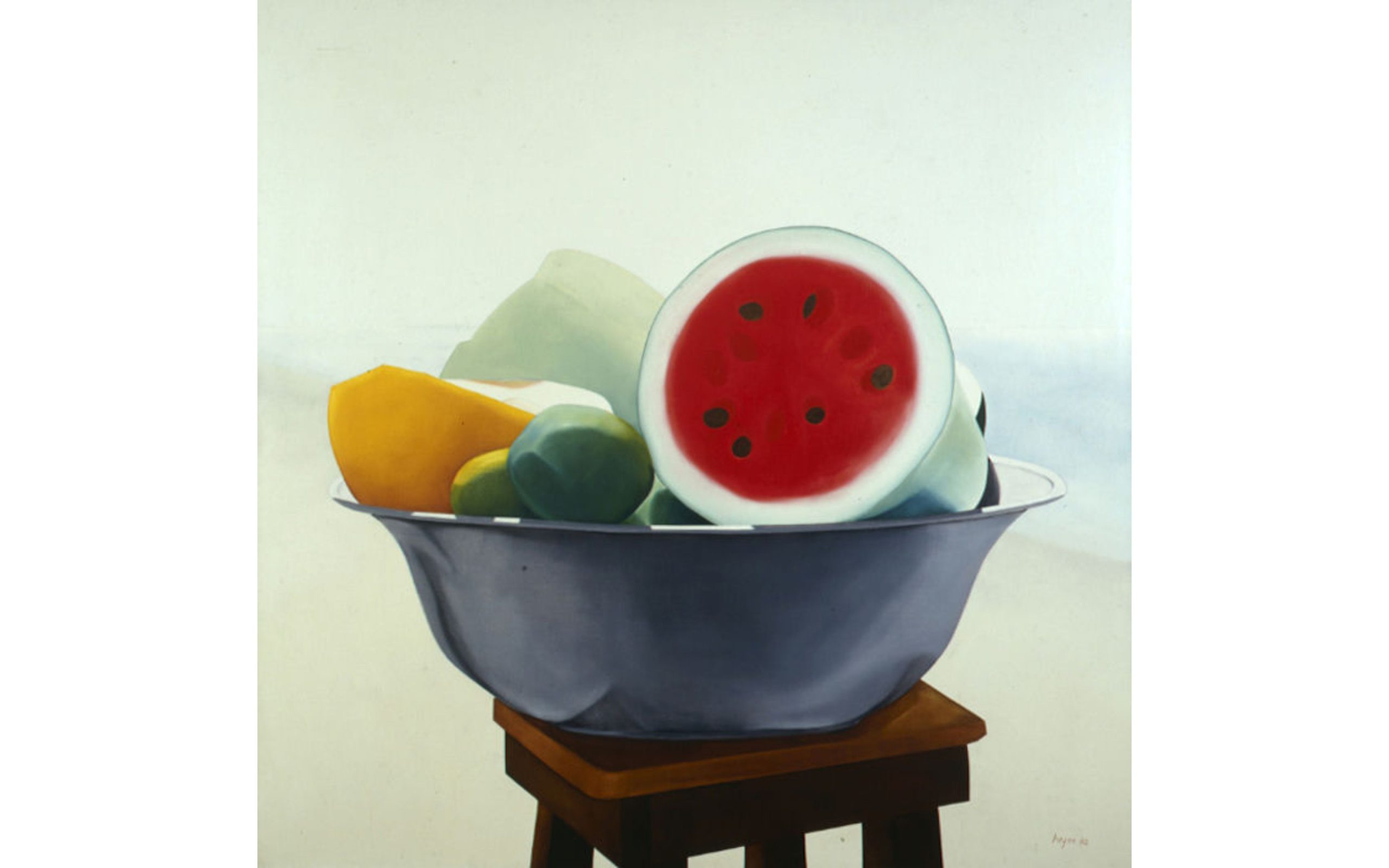
Ana Mercedes Hoyos
Bodegón Atmósfera, 1992
Oil on canvas
150 x 150 cm (60 x 60 in)
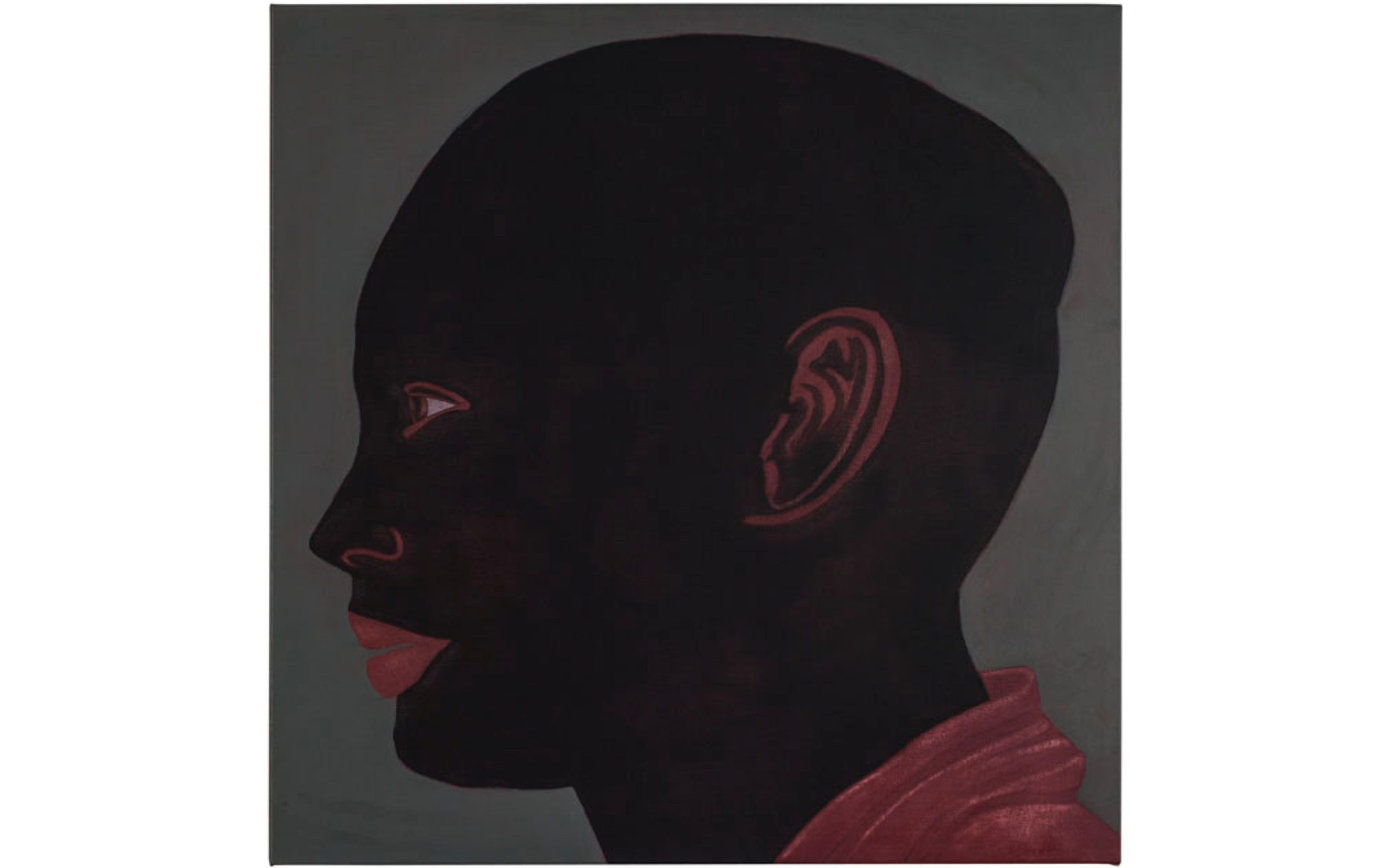
Ana Mercedes Hoyos
Zenit, 2013
Oil on canvas
60 x 60 cm (24 x 24 in)
About the artist
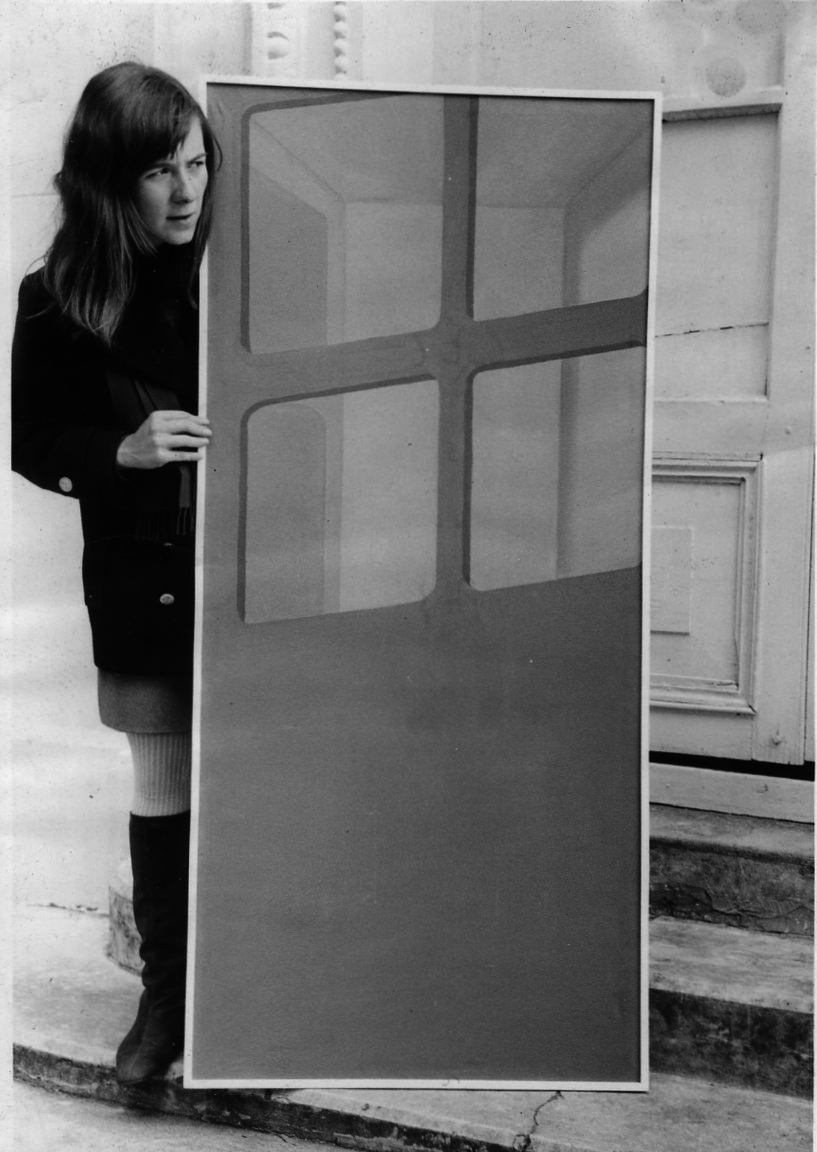
Image on top: Ana Mercedes Hoyos at an exhibition at Galeria UD in 1968 in Bogota. Courtesy of the estate of Ana Mercedes Hoyos.
Ana Mercedes Hoyos (1942–2014) was a painter and sculptor recognized among the most radical contributors to Latin American art. Born and based in Bogotá, she kept a studio and home in New York, relocating her practice between the two geographies.
At 24, she married architect Jacques Mosseri, whose Italian-Greek family had settled in Colombia in the early twentieth century. Their partnership—both personal and intellectual—shaped the trajectory of Colombian modernism. Hoyos studied architectural drawing at the Pontificia Universidad Javeriana before enrolling in Fine Arts at the Universidad de los Andes. This technical foundation, in dialogue with Mosseri’s architectural practice, informed her Ventanas (Windows) series—an early formal investigation of space, light, and perspective.
Her early works were influenced by Pop Art; by the 1970s, however, her practice shifted toward minimalist geometric abstraction. In 1966, she earned second prize at the inaugural Young Painters’ Biennial in Bogotá.
In the early 1980s, she created Atmósferas—predominantly white paintings evoking Bogotá’s overcast skies. Around the same time, she produced three Manhattan paintings illustrating New York’s blue skies; Manhattan, 1983, is part of the Solomon R. Guggenheim Museum’s permanent collection. This period of chromatic restraint was followed by Arcoiris (Rainbows), a series exploring the behavior of color and refraction. Her work then returned to the figure with still lifes grounded in art historical references, including a sunflower series inspired by Van Gogh and explorations of Caravaggio’s still life techniques.
While developing these historical still lifes, Hoyos began her Palenque series, sparked by a fruit bowl she encountered on a beach in Cartagena. She depicted these bowls as geometric forms, applying technical draftsmanship and perspective to reveal both interior and exterior views. This intimate approach to everyday objects recalled her early constructivist methods and celebrated the colour and vitality of Colombia’s Caribbean coast. Palenque marked the beginning of a decades-long inquiry into Afro-Colombian identity, and the series she is most known for.
In the 1990s, Hoyos formed a close bond with the palenquero community, especially with a woman named Zenaida, who became both friend and muse, and is a recurrent subject in her paintings. Immersed in their culture, she visited Bazurto Market and the town of San Basilio de Palenque, where she was profoundly moved by their traditions and processions. These experiences inspired a series of oil paintings, which evolved into La Procesión (The Procession) and later Lazos (Bows): abstract acrylic works focused on ceremonial dresses and ribbons worn by young girls.
Before her death, her pictorial investigation culminated in a reflection on the historical and sociological phenomenon of slavery, illustrated in works such as Comercio Triangular, recently exhibited at the Palais de Tokyo and the Wexner Center for the Arts as part of Sarah Maldoror: Cinema Tricontinental.
In 2024, Hoyos and Mosseri were honored at The Museum of Modern Art (MoMA) in Crafting Modernity: Design in Latin America 1940–1980, recognized as two of Colombia’s key contributors to Latin American modern art, design, and architecture—cementing their place as one of the most iconic creative couples in the region.
Hoyos’s career moved fluidly between figuration and abstraction, consistently challenging and expanding the boundaries of both. In an era dominated by conflict-centric narratives, her work stood apart—celebrating a resilient, joyful community whose traditions endured with strength.
Full CV here
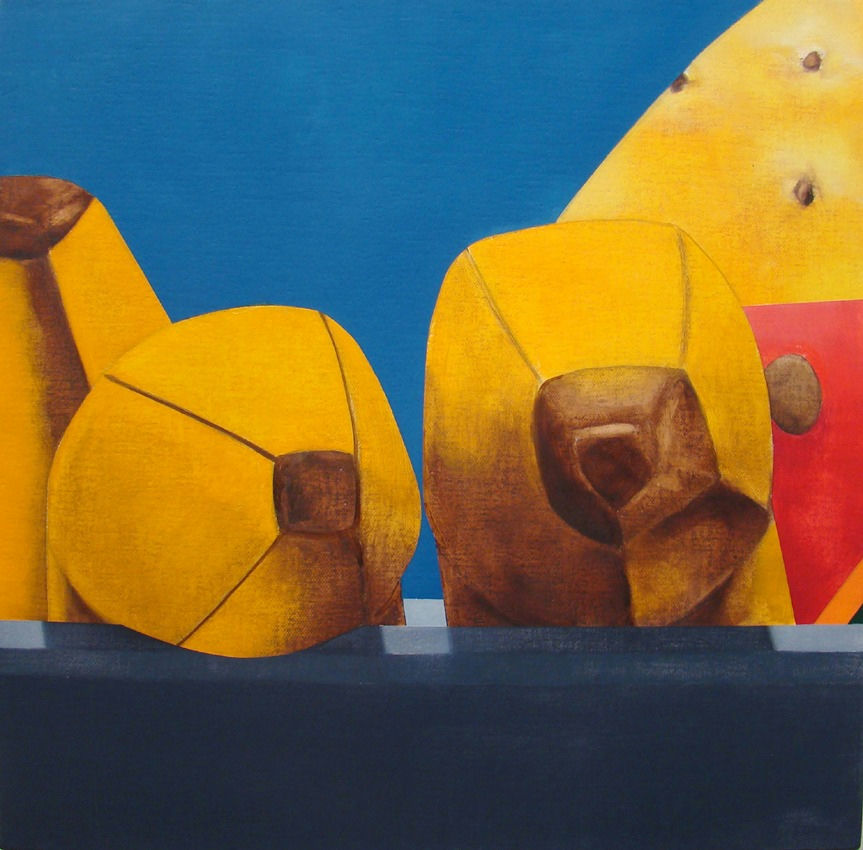
Image on top: Ana Mercedes Hoyos, Sin título, 2009, acrylic on canvas, 40 x 40 cm. Courtesy of the estate of Ana Mercedes Hoyos.
Leonora Carrington
exclusive representation in
Europe and Switzerland
“We’re proud to begin this new chapter with rossogranada, a female-led Swiss organization whose vision aligns with our commitment to promoting the legacy of Ana Mercedes Hoyos at an international level. This partnership will allow us to expand the reach of her work through research and a carefully curated approach that reflects the depth and complexity of her practice."
- Ana Mosseri

Image on top: Ana Mercedes Hoyos, Comercio triangular, 2007, acrylic on canvas, 326 x 326cm.n Courtesy of the estate of Ana Mercedes Hoyos.
rossogranada is pleased to announce the representation of the Ana Mercedes Hoyos Estate in Switzerland, Europe, and the United Kingdom.
Ana Mercedes Hoyos (1942–2014) is one of Colombia’s most prominent and internationally recognized female artists of the twentieth century. Based between Bogotá and New York, she developed a cross-continental practice that positioned her at the center of Latin American modern and contemporary art. Her early work was shaped by American modernism and the dynamic New York art scene of the 1970s, where she absorbed elements of pop, conceptualism, and abstraction. The Ventanas series marked a turning point, reflecting her ability to move fluidly between abstraction and figuration, an approach that would define her career.
Over time, her work shifted toward cultural memory and historical reflection, particularly through her long-standing relationship with the Afro-Colombian community of San Basilio de Palenque. Through still lifes, portraits, and large-scale compositions, Hoyos brought visibility to subjects often excluded from dominant art histories, while maintaining a rigorous commitment to formal exploration. Her work bridges visual experimentation and cultural storytelling, solidifying her legacy as a key figure in the redefinition of Latin American art.
In partnership with the Estate, rossogranada will lead the preservation, promotion, and international dissemination of Hoyos’s legacy across Europe. Through curated exhibitions, educational initiatives, and institutional collaborations, the gallery will support a new chapter for Hoyos’s work; one that expands its visibility while honoring the depth and relevance of her artistic vision.
WORKS
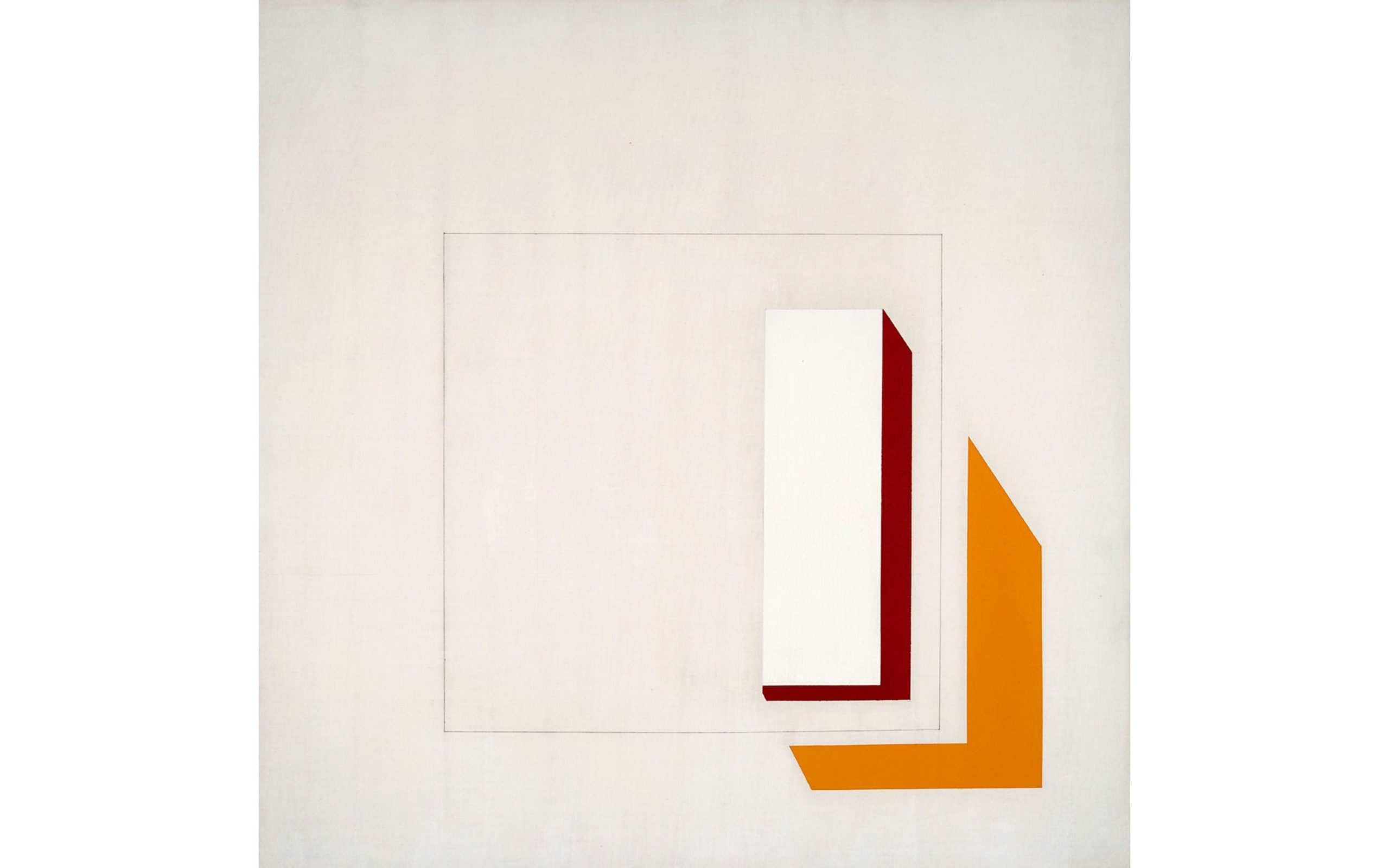
Ana Mercedes Hoyos
Proyecto para ventanas, 1976
Acrylic on canvas
120 x 120 cm (48 x 48 in)

Ana Mercedes Hoyos
Sin título, 2009
Oil on canvas
40 x 40 cm (16 x 16 in)

Ana Mercedes Hoyos
Ventanas, 1969
Oil on canvas
20 x 20 cm (8 x 8 in)

Ana Mercedes Hoyos
Sin título, 1992
Oil on canvas
35 x 35 cm (14 x 14 in)

Ana Mercedes Hoyos
Bodegón Atmósfera, 1992
Oil on canvas
150 x 150 cm (60 x 60 in)

Ana Mercedes Hoyos
Zenit, 2013
Oil on canvas
60 x 60 cm (24 x 24 in)
About the artist

Image on top: Ana Mercedes Hoyos at an exhibition at Galeria UD in 1968 in Bogota. Courtesy of the estate of Ana Mercedes Hoyos.
Ana Mercedes Hoyos (1942–2014) was a painter and sculptor recognized among the most radical contributors to Latin American art. Born and based in Bogotá, she kept a studio and home in New York, relocating her practice between the two geographies.
At 24, she married architect Jacques Mosseri, whose Italian-Greek family had settled in Colombia in the early twentieth century. Their partnership -both personal and intellectual- shaped the trajectory of Colombian modernism. Hoyos studied architectural drawing at the Pontificia Universidad Javeriana before enrolling in Fine Arts at the Universidad de los Andes. This technical foundation, in dialogue with Mosseri’s architectural practice, informed her Ventanas (Windows) series which was an early formal investigation of space, light, and perspective.
Her early works were influenced by Pop Art; by the 1970s, however, her practice shifted toward minimalist geometric abstraction. In 1966, she earned second prize at the inaugural Young Painters’ Biennial in Bogotá.
In the early 1980s, she created Atmósferas, predominantly white paintings evoking Bogotá’s overcast skies. Around the same time, she produced three Manhattan paintings illustrating New York’s blue skies; Manhattan, 1983, is part of the Solomon R. Guggenheim Museum’s permanent collection. This period of chromatic restraint was followed by Arcoiris (Rainbows), a series exploring the behavior of color and refraction. Her work then returned to the figure with still lifes grounded in art historical references, including a sunflower series inspired by Van Gogh and explorations of Caravaggio’s still life techniques.
Hoyos began the Palenque series after encountering a fruit bowl on a beach in Cartagena. She reimagined these objects as geometric forms, using draftsmanship to explore both interior and exterior space. This marked the start of a decades-long investigation into Afro-Colombian identity and remains her most recognized body of work.
In the 1990s, her relationship with the community of San Basilio de Palenque -especially with Zenaida, a close friend and muse- led to a new phase of portraits and processional scenes. These evolved into La Procesión and Lazos, abstract works centered on ceremonial dress and ritual as forms of cultural memory.
Before her death, her pictorial investigation culminated in a reflection on the historical and sociological phenomenon of slavery, illustrated in works such as Comercio Triangular, recently exhibited at the Palais de Tokyo and the Wexner Center for the Arts as part of Sarah Maldoror: Cinema Tricontinental.
In 2024, Hoyos and Mosseri were honored at The Museum of Modern Art (MoMA) in Crafting Modernity: Design in Latin America 1940–1980, recognized as two of Colombia’s key contributors to Latin American modern art, design, and architecture—cementing their place as one of the most iconic creative couples in the region.
Installation view of the exhibition “Crafting Modernity: Design in Latin America, 1940-1980", Museum of Modern Art, New York, March 8–September 22, 2024. IN2554.1. Photograph by Robert Gerhardt.
Hoyos’s career moved fluidly between figuration and abstraction, consistently challenging and expanding the boundaries of both. In an era dominated by conflict-centric narratives, her work stood apart—celebrating a resilient, joyful community whose traditions endured with strength.
Her work is held in numerous public and private collections worldwide, including the Guggenheim (New York), the Fuji Art Museum (Tokyo), the Museum of Modern Art (Mexico City), the Ibercaja Art Collection (Zaragoza), the Museum of Modern Art in Bogotá (MAMBO), the Museo Nacional de Artes Visuales (Montevideo), the Smithsonian National Museum of African American History and Culture (Washington DC), the Perez Museum (Miami) and other.
Full CV here
This is a joint announcement from the Estate of Ana Mercedes Hoyos and rossogranada.
